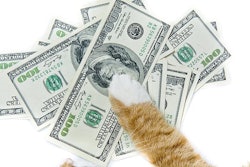
Soaring inflation. Supply chain disruptions. Labor shortages and upheavals. A pandemic that just won’t end, now becoming endemic. A major war in Europe for the first time in 80 years.
The world is dealing with a lot right now, and no person, region or industry—including pet food—can fully escape all the problems. But perhaps we can at least pause for a few minutes to celebrate just how well the U.S. pet food and pet care markets are doing despite all the events of the past two years?
Final sales data for 2021 reveal that the U.S. pet care industry reached a new mark, US$123 billion; pet food alone hit US$51 billion, also a new milestone, according to the American Pet Products Association (APPA) and Packaged Facts. (Note that APPA’s figure for pet food is slightly lower at US$50 billion.)
The industries significantly outperformed even the most bullish projections—and what’s more, projections for 2022 and 2023 remain very positive. Yet it’s not as if any of the headwinds confronting the industry, pet owners and everyone else are dying down. Can this strong performance persist?
First, the good news
“Following a banner year in 2020 when the industry exceeded $100 billion in sales for the first time, APPA was optimistic it would see continued strong sales in 2021, estimating growth would approach 6% and bring total sales to US$109.6 billion by year-end,” read an APPA press release. “Actuals eclipsed even bullish estimates at 13.5% growth year-over-year.”
For pet food, by far the largest segment of the overall pet industry, sales increased nearly 15%, according to Packaged Facts. (APPA pegged the segment’s growth at about 13.6%, likely why its sales total was a little lower.)
David Sprinkle, director of pet market research at Packaged Facts, projects similarly robust increases for 2022 and 2023 of 14% and 10%, respectively. That would put U.S. pet food sales at $US58 billion by the end of 2022 and US$63 billion by year-end 2023. For pet care overall, his projections are US$137 billion for 2022 (13% higher than 2021) and US$151 billion for 2023 (up 10%).
(Note: Sprinkle will present this data, along with insights and drivers for the growth, at Petfood Forum 2022 on May 3.)
Not all blue skies ahead
I’d be remiss in sharing all these positive data and rosy outlooks without acknowledging that none of the problems in my first sentence above are going away anytime soon. Because of many of those issues, pet food manufacturers and marketers are facing rising costs and starting to have to pass them along to consumers. And, despite many pet owners’ utter devotion to their furry family members and willingness to pay almost anything to keep them healthy and happy, they may have a limit.
While APPA’s most recent COVID-19 pulse study, conducted in February 2022, found that U.S. pet owners fears regarding their finances have waned, some still linger, reported my colleague, Tim Wall. “Even among younger pet owners, monetary worries influenced pet food purchasing decisions less than during the onset of the pandemic or the omicron surge,” he wrote. “However, economic concerns still hovered over approximately half of survey respondents.”
Those respondents may fall among the most vulnerable demographic groups. Sprinkle said new Packaged Facts and MRI Simmons data show that most of the surge in pet adoptions during the pandemic—and the accompanying rise in pet food and spending—came from households with higher incomes who own their own homes, are less likely to have children at home, generally have higher education levels and similar traits. Conversely, among households with lower incomes and education levels who are more likely to be renters and have children at home, pet ownership and spending actually declined.
However, Packaged Facts has other reasons for its bullish projections, including the continuing rise of e-commerce and how that has contributed to the ongoing convergence between the overall consumer market, especially the human food category, and pet food. “The internet brings the whole consumer market closer to the pet food market,” Sprinkle said, referring to the “human market increasingly crashing in on the pet food market” in new ways, which younger pet owners particularly seem to welcome.
Will those trends be enough to offset any negative signs? It’s a situation that definitely bears watching.
















